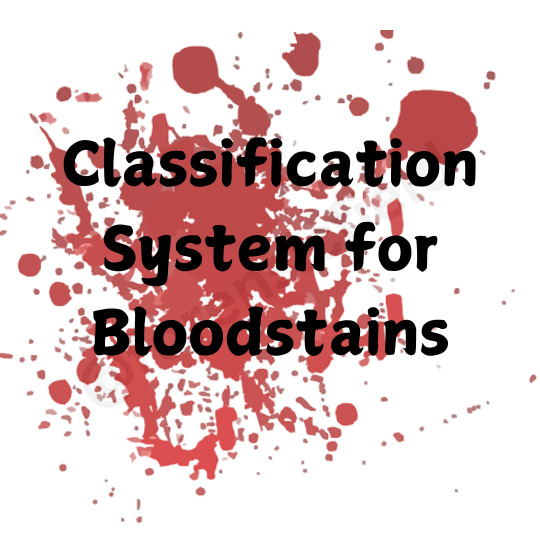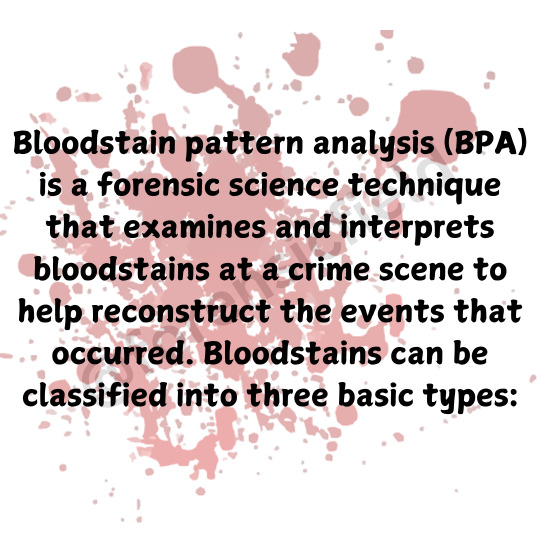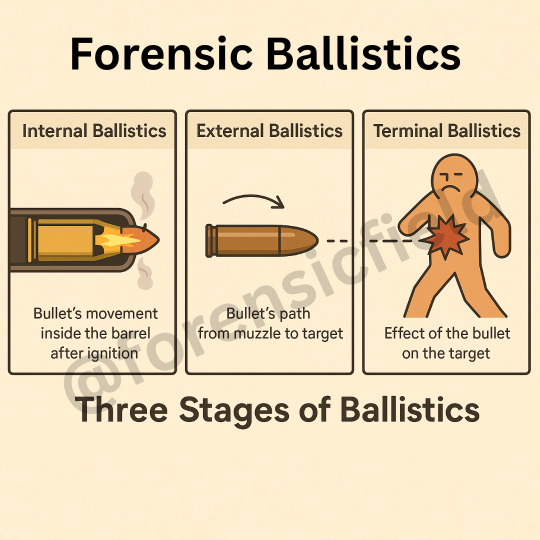#Forensics Investigator
Explore tagged Tumblr posts
Text




The Animatrix (2003) - A Detective Story
#the animatrix#film noir#scifi#animation#cyberpunk aesthetic#neo noir#anime#virtual reality#hacker#dystopian society#private investigator#2d animation#gumshoe#tech gadgets#forensics#telephone#hacking#user interface#user experience
848 notes
·
View notes
Text

After about seven hours of Work, I have put together my variation of the CSI Las Vegas Crime Lab based on what I observed while binging the show. Why the fuck do I do this to myself...
Edit: Added in a storeroom. Edit 2: Added walk-in fridge.
Morgue drop off.
Morgue.
Morgue wash-off.
Morgue storage.
Morgue prep room.
Grissom's office.
Break room.
Evidence garage.
DNA lab.
Trace.
Audio and Video lab.
Ballistics.
Handwriting.
Layout room one.
Junior supervisor's office (Catherine).
Fingerprints.
Layout room two.
Layout room three.
Intermediate supervisor's office (Conrad Ecklie).
Reception.
Locker room/showers.
Woman's bathroom.
Men's bathroom.
Walk-in fridge.
Storeroom.
#fanfiction#fan fiction#oc: georgina howard#wip: forensic bug#sara sidle#greg sanders#gil grissom#warrick brown#nick stokes#csi las vegas#csi#csi crime scene investigation#floor plans
292 notes
·
View notes
Text






#forensics#criminology#forensic science#evidence#criminalistic#forensic field#crime#forensic#crime scene investigation#blood stain
105 notes
·
View notes
Text
making akihiko and chie cops was the dumbest fucking decision ever because i know in my heart that they're actually a physical therapist and professional racecar driver respectively
#akihiko sanada#chie satonaka#persona 3#p3#p4#persona 4#persona#i have some post p5 hcs for them since i have some aus that take place at that time and deal with the p3 cast#and it's a pretty major timeskip#but these are both basically canon to me#moreso the akihiko one#racecar driver kind of a weird pick for chie but it fits to me#not related to the cop thing but i do have some hc jobs for a couple other characters too#forensics investigator yosuke#daycare worker teddie (part-time when he's not working at Junes)#art teacher chidori#i actually hc her as teaching at kosei but that veers a little into au territory#im writing a fic about her and yusuke becoming friends/close#and related to that#ive considered the idea of coach junpei at shujin#to replace kamoshida#and jundori can be teachers together....#anyway
112 notes
·
View notes
Note
Yo. Been really getting interested in Eureka recently, cause it looks cool as hell from what I've read, and also I ran a police procedural campaign a few years back that I'd like to bring back, but my choice of system back then for the type of game was bad (Savage Worlds). Likely gonna give Eureka a shot with it anyway, but does the game separate out the urban fantasy elements from the more realistic/mundane elements by how much? Like, do traits have seperate sections for non/fantasy and fantasy traits, or is it all just together? Is there anything else in the game that complicates running a campaign with no fantasy elements?
You can download Eureka from this link for free (we’d really appreciate it if you paid but payment is optional) and check it out for yourself, just in case you didn’t know!
But to answer your question, the urban fantasy stuff and the mundane stuff actually are quite separate in the book. You’ll find a few references to the existence of vampires and stuff in the mundane rules, but all of the rules for supernatural characters are found in the very back of the book, not mixed in with the other character creation stuff.
As for other complications, this isn’t exactly a complication with running a fully mundane no-fantasy game, but there might be a few small complications with running a police procedural game. Don’t get me wrong, I actually still think that Eureka is probably your best option for a police investigation campaign, but there will need to be a little tinkering. But that’s what I’m here for.
By default, Eureka assumes that the PCs are not cops, so it assumes that they don’t have access to all of the resources cops have when investigating crimes. Eureka assumes that the PCs don’t have the institutional power to make an arrest, to take someone in for official interrogation, to call for backup if they get into a bad situation, or to send forensic evidence back to the lab for analysis.
Now, the only one of these that I can think of actually causing any friction with the game itself is the part about sending forensic evidence back to the lab.
Making an arrest and interrogating someone would be easily handled by the rules as they are with no changes. For calling for backup, you could take a look at the “Heat” section in Chapter 7. That section is normally used for what happens if the cops get called *on* the PCs, but since it has mechanics to tell you how long it takes the cops to show up, you could just use those same rules to determine how long it takes for backup to arrive.
Sending forensic evidence back to the lab, well, we don’t have anything for that. If I had to make something up on the fly, realistically it would probably be like, the PCs bag the evidence and send it to the lab and then in 1D6 days they get the information back.
Of course if I were writing this into the rules for real, I’d probably spend hours or days on it coming up with some kind of system that determines the reliability of that evidence and how likely it is to be a false positive or false negative (because IRL forensic evidence is not nearly as reliable as cop shows make it look or as reliable as police would like you to believe), but i have Silk&Dagger to write right now.
And here's another link

#police#cops#buddy cop#police procedural#ttrpg design#ttrpg#rpg#tabletop#indie ttrpg#ttrpg tumblr#ttrpg community#ttrpgs#indie ttrpgs#forensics#homebrew#urban fantasy#free rpg#indie rpgs#rpgs#savage worlds#eureka#eureka: investigative urban fantasy
63 notes
·
View notes
Text










Under the Skin Season 2 | S02E04
Chinese Drama - 2024, 28 episodes
Native Title: #猎罪图鉴2
Genres:#Mystery | #Investigation
Tags: #Detective Male Lead | #Forensic Artist Male Lead | #Police Procedural | #Partners in Crime
Cast:#Tan Jian Ci | #Jin Shi Jia
Links: GAGA | Viki | YouTube | iQIYI | WeTV | Youku | Tencent
Catalog: Episode GIF sets | Chinese Drama | Partners in Crime Drama
#Drama: Under the Skin Season 2#Chinese Drama - 2024#猎罪图鉴2#CDrama#Mystery#Investigation#Detective Male Lead#Partners in Crime#Forensic Artist Male Lead#Police Procedural#Tan Jian Ci#Jin Shi Jia
31 notes
·
View notes
Text
listening to an old interview where jl tried to trick his insurance after hurricane irene because the plan didn't cover flood damage by waiting for it to dry out and then calling them like, "uhh yeah the furnace broke we don't know why 🤷♂️", but then the guy came and was like "this has clearly been underwater" lmaooo
#pretty sure I bookmarked this link from op's old post on here a while back but now I can't find the source post sorry <3#story starts at about 9:25. the recording has some very slight jarring audio glitching in a couple places#good on him for trying tho#it's so funny bc jf is also really aghast like ''really that didn't work? they did a forensic investigation??'' scammers in arms
25 notes
·
View notes
Text

Day 2706 Ema Skye
#fanart#ace attorney#ema skye#phoenix wright#aa#apollo justice#forensics#science#scientist#detective#investigator#magnifying glass#glasses#gif
91 notes
·
View notes
Text
AHHHHHHHHHHHHHHHHHHHHHHHHHHHH


THEY ARE BACK!!!!! I NEED TIME TO WATCH THE 28 EPS!!!!! NOW!!!







#under the skin 2#forensics#police#painter#shen yi#du cheng#tan jianci#jin shijia#chinese actors#chinese series#detective fiction#crime investigation#bromance
15 notes
·
View notes
Text

#forensic#forensics#criminology#forensic science#criminalistic#evidence#forensic field#forensic science notes#crime scene investigation#crime#ballistic
7 notes
·
View notes
Text
Cyanide Poison

Let's start by understanding exactly how cyanide kills you. In simple terms, cyanide prevents cells from using oxygen to make energy molecules.
The cyanide ion, CN-, binds to the iron atom in cytochrome C oxidase in the mitochondria of cells. It acts as an irreversible enzyme inhibitor, preventing cytochrome C oxidase from doing its job, which is to transport electrons to oxygen in the electron transport chain of aerobic cellular respiration. Now unable to use oxygen, the mitochondria can't produce the energy carrier adenosine triphosphate (ATP). Tissues that require this form of energy, such as heart, muscle cells, and nerve cells, quickly expend all their energy and start to die. When a large enough number of critical cells die, you expire as well. Death usually results from respiratory or heart failure.
Immediate aymptoms include headaches, nausea and vomiting, dizziness, lack of coordination, and rapid heart rate. Long exposure symptoms include unconsciousness, convulsions, respiratory failure, coma and death.
A person exposed to cyanide may have cherry-red skin from high oxygen levels, or dark blue coloring, from Prussian blue (iron-binding to the cyanide ion). In addition to this, skin and body fluids may give off an almond odor.
The antidotes for cyanide include sodium nitrite, hydroxocobalamin, and sodium thiosulfate.
A high dose of inhaled cyanide is lethal too quickly for any treatment to take effect, but ingested cyanide or lower doses of inhaled cyanide may be countered by administering antidotes that detoxify cyanide or bind to it. For example, hydroxocobalamin, natural vitamin B12, reacts with cyanide to form cyanocobalamin, which leaves the body in urine.
These antidotes are administrated via injection, or IV infusion.
Cyanide is actually a lot more common than you'd think. It's in pesticides, fumigants, plastics, and electroplating, among other things. However, not all cyanide are so poisonous. Sodium cyanide (NaCN), potassium cyanide (KCN), hydrogen cyanide (HCN), and cyanogen chloride (CNCl) are lethal, but thousands of compounds called nitriles contain the cyanide group, yet aren't as toxic. They still aren't terribly good for you, so I wouldn't go around ingesting other cyanide compounds, but they're not quite as dangerous as the lethal kind.
Thank you for reading, have a lovely day :)
#cyanide#poison#cyanide poison#tw poison#poisons#chemistry#?#if it counts lmao#crime#criminal#investigation#forensics#scienceblr#science#sherlock#sherlock holmes
49 notes
·
View notes
Text




The Silence of the Lambs (1991)
#the silence of the lambs#cult films#horror#90s horror#horror movies#moth#cw body horror#cw death#cw horror#cw insects#cw murder#1990s#autopsy#creepy#corpse#criminal investigation#forensics
127 notes
·
View notes
Text










Under the Skin Season 2 | S02E01
Chinese Drama - 2024, 28 episodes
Native Title: #猎罪图鉴2
Genres: #Mystery | #Investigation
Tags: #Detective Male Lead | #Forensic Artist Male Lead | #Police Procedural | #Partners in Crime
Cast: #Tan Jian Ci | #Jin Shi Jia
Links: GAGA | Viki | YouTube | iQIYI | WeTV | Youku | Tencent
Catalog: Episode GIF sets | Chinese Drama | Partners in Crime Drama
#Drama: Under the Skin Season 2#Chinese Drama - 2024#猎罪图鉴2#CDrama#Mystery#Investigation#Detective Male Lead#Partners in Crime#Forensic Artist Male Lead#Police Procedural#Tan Jian Ci#Jin Shi Jia
34 notes
·
View notes
Text

Did you know that there's more to catching vile villains than we publicly announce using our teenage detectives??? I'm currently measuring a footprint to figure out which of Carnen’s men fled the scene of the crime.
#where on earth is carmen sandiego#carmen sandiego#ask oc blog#forensics#forensic investigators oc#acme#Carmen Sandiego ask blog#where in the world is carmen sandiego#oc ask blog
8 notes
·
View notes
Text

"Which one of you was going to tell me tea tastes different if you put it in hot water?"

"Y-You were putting it in cold water?!"

"Kainé! Answer the question, Kainé!"

"Yeah??? I thought for like, five years that people just put it in hot water to speed up the 'tea-ification' process. Didn't realize there was an actual reason."

"You don't have the patience to microwave water for 3 MINUTES!?"

"WHY ARE YOU PUTTING IT IN THE MICROWAVE TO BOIL IT?!"

"Do you think I have the patience to boil water on the stove?"

"It takes less than a minute!"

"Ema Skye, is your stovetop powered by the fucking SUN?!"

"How long does it take you to boil a cup of water on the stove?!"

"Seven minutes."

"Just stick the mug on the top of the stove on medium heat and it boils in like two minutes! Less than that if you use a saucepan."

"You're putting the whole mug on the stove? ON MEDIUM HEAT?! Your stove IS enchanted!"

"Everyone at this table is a fucking lunatic."

"DO NONE O' YOU LOT OWN A FOOKIN' KETTLE?!"
#shitpost#long shitpost#[[the hussy]]#[[the card king]]#[[the prosecuting prodigy]]#[[the forensic investigator]]#[[the diver]]
7 notes
·
View notes
Text
Choosing the Right Type of Forensic DNA Testing
DNA testing has revolutionized how investigators solve crimes and identify victims, as well as the exoneration of the innocent. As there are various types of forensic DNA testing available, understanding the differences can help law enforcement and legal professionals navigate the labs to contact and the conversations that will take place.
STR Analysis (Short Tandem Repeat)
This is the most widely used method in forensic DNA testing. It examines specific regions of DNA that vary greatly among individuals. This technique is especially effective for human identification in criminal cases due to its high degree of specificity and reliability.
mtDNA Analysis (Mitochondrial DNA)
This analysis is used when nuclear DNA is degraded or unavailable, often in older samples. It examines the maternal lineage and can provide valuable insights in cases involving skeletal remains or hair samples. While less discriminative than STR, mtDNA can still be crucial for historical cases.
Y-STR Analysis
Y-STR targets the Y chromosome, making it ideal for tracing paternal lineage. This method is particularly useful in sexual assault cases where male DNA is mixed with female DNA, allowing forensic analysts to isolate male-specific markers for identification.
SNP Analysis (Single Nucleotide Polymorphism)
This emerging technique is often headlined in the industry and focuses on variations at specific single nucleotide sites in the DNA sequence. It's useful for ancestry testing, specifically forensic genetic genealogy in criminal cases, and can provide additional information when traditional methods are inconclusive.
DNA Phenotyping
While not a standard method for identification, DNA phenotyping can predict physical traits such as eye color, hair color, and skin tone from DNA samples. This approach can assist in generating leads when suspects are unknown, particularly in cases with minimal evidence.
9 notes
·
View notes